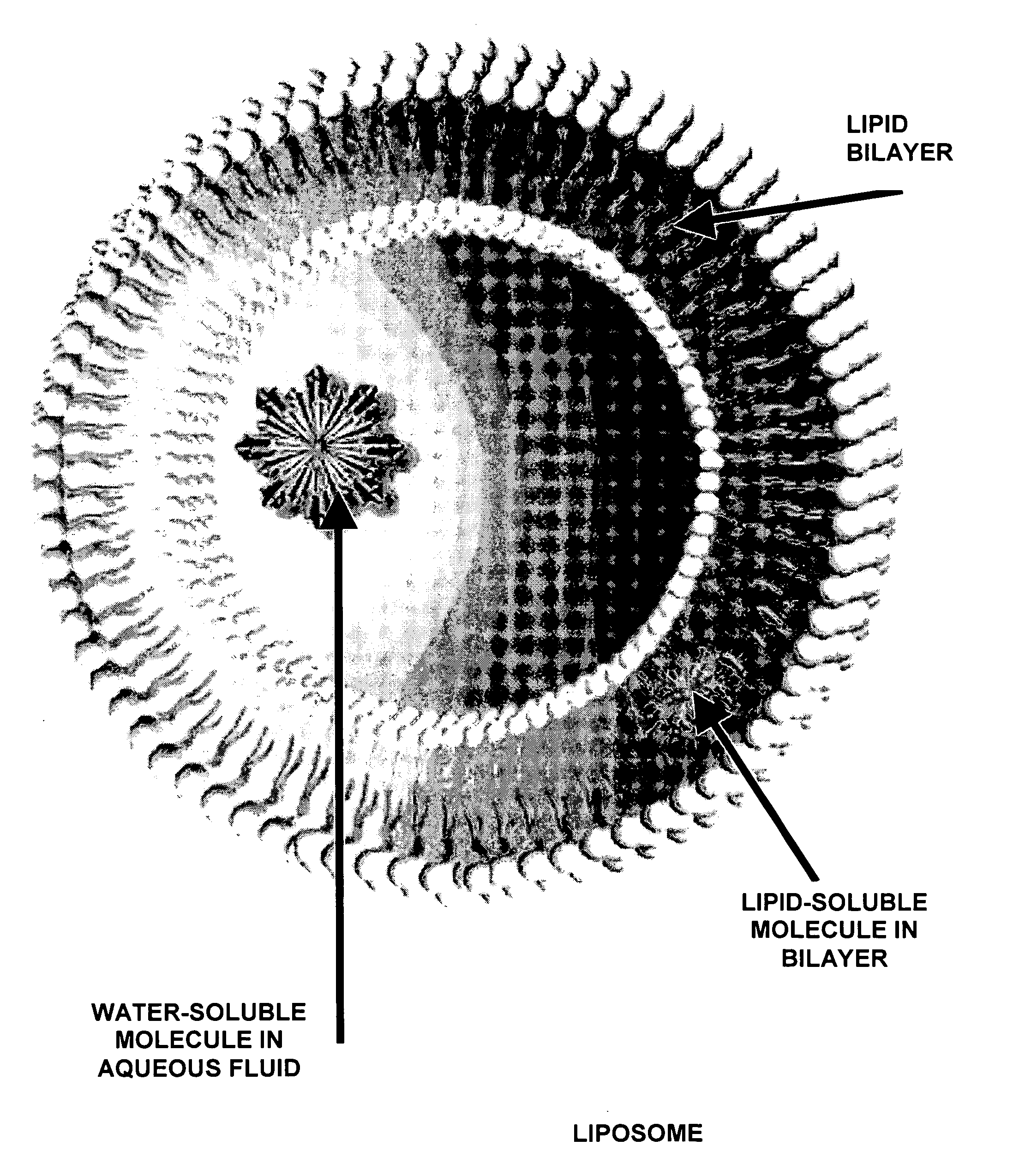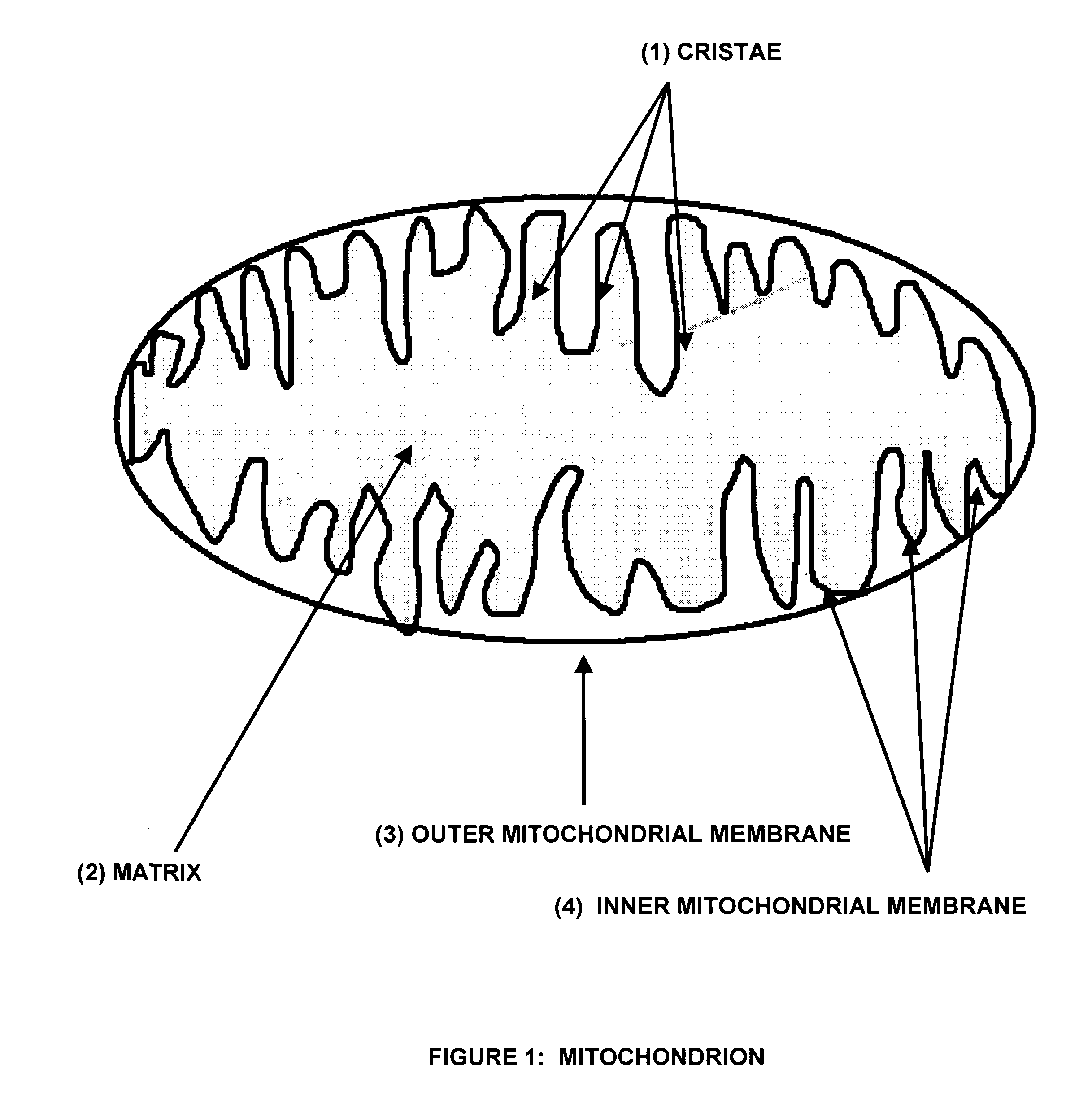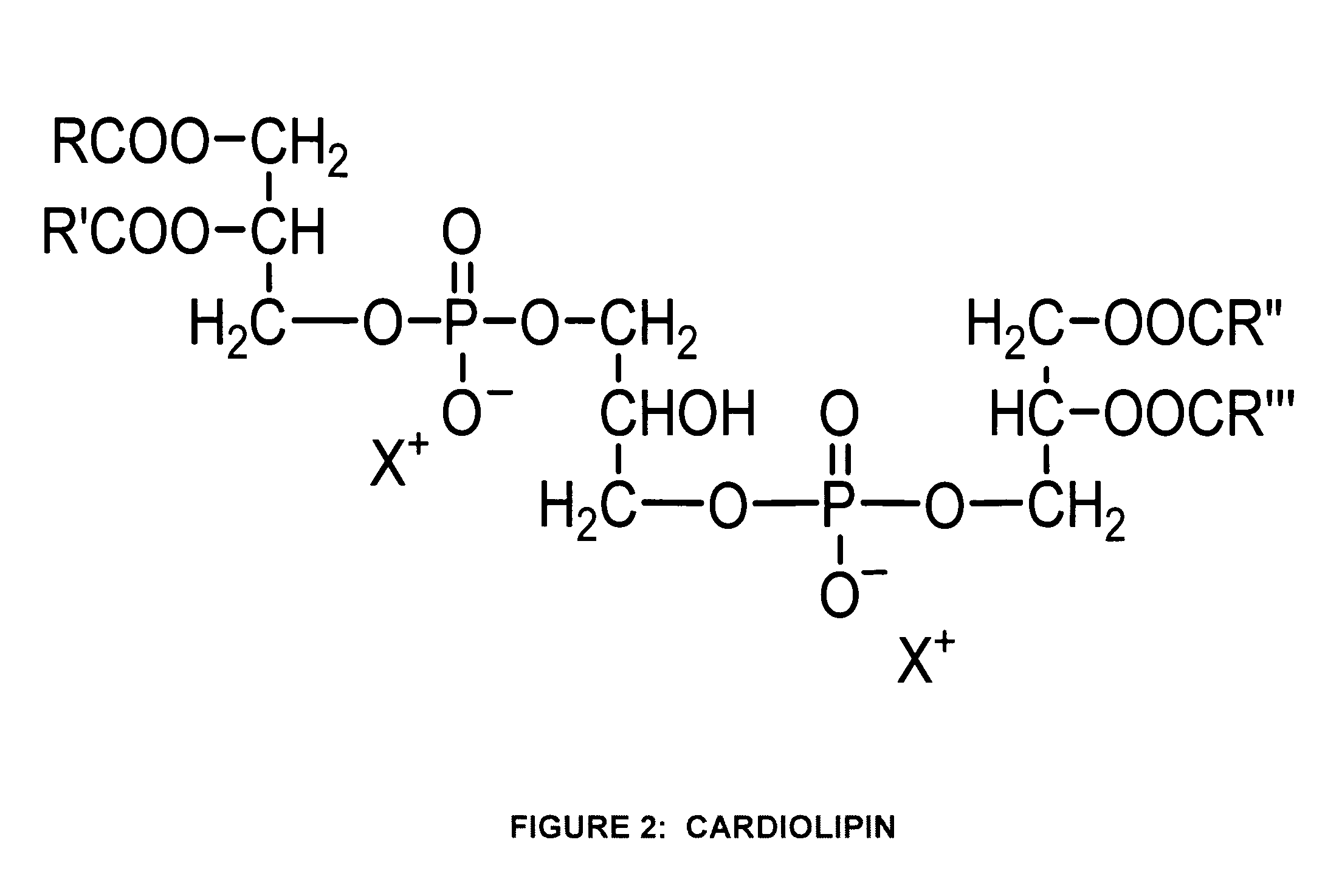Liposome containing cardiolipin for improvement of mitochondrial function
a technology of cardiolipin and liposome, which is applied in the direction of liposome delivery, pharmaceutical delivery mechanism, medical preparations, etc., can solve the problems of mitochondrial damage, loss of cellular function, and aging, and achieve the effect of not being susceptible to substantial oxidative damag
- Summary
- Abstract
- Description
- Claims
- Application Information
AI Technical Summary
Benefits of technology
Problems solved by technology
Method used
Image
Examples
example 1
Measurement of Protection from Oxidative Stress
[0079]The assay described in this experiment measures oxidative stress occurring within the mitochondria. As discussed above, the biochemical reactions used by mitochondria to generate energy yielding ATP molecules also produce highly oxidizing superoxide free radical as a by-product. Using flow cytometry, the below example measures the protection various test samples provide from oxidative stress by monitoring the status of superoxide within mitochondria following treatment with the test materials.
[0080]MitoSOX Red mitochondrial superoxide indicator (Invitrogen cat#M36008) is a fluorescent dye that is selectively taken up by mitochondria. Once in the mitochondria, MitoSOX reacts with superoxide free radical to form a fluorescent product (excitation / emission maxima=510 / 580 nm) that binds to mitochondrial nucleic acid. A higher fluorescence reading corresponds to a higher level of superoxide free radical being present within the mitochon...
example 2
Measurement of ATP Levels
[0093]The level of cellular ATP is a marker of cellular and mitochondrial health. As explained in this example, ATP levels can be monitored using an ATP dependent luciferase that generates light in the presence of ATP. The amount of light generated is directly proportional to the amount of ATP present.
[0094]CHO-K1 (Chinese hamster ovary) cells are purchased from ATCC (Manassas, Va.) (cell accession #ATCC CCL 61). Cell cultures are established in 96 well opaque plates with 1×104 cells per well. Following adherence, the cells are transferred to low glucose media (1 g / l) and are incubated overnight. Cells cultured in low glucose media have a reduced ATP content.
[0095]Following overnight culture, the cells are exposed to t-butyl-peroxide (1 mM) for 2 hours to induce cellular stress. Peroxide reduces ATP levels lower than glucose alone and mimic a damaged cell state. Following peroxide exposure, fresh low glucose media is added back to the cells. Immediately foll...
example 3
Liposome Stability
[0099]Transmission electron microscopy (TEM) is often used to determine the size and morphological characteristics of liposomes. A commonly used method of sample preparation for obtaining a TEM image is to apply a drop of the liposome suspension into a plastic-coated grid, then negatively stain the material with phosphotungstic acid or ammonium molybdate. The result is a monolayer of liposomes embedded in the negative stain.
[0100]More specifically a sample may be prepared for TEM imagery as follows: 1% aqueous agarose (w / v) is poured into plastic Petri dishes and air-dried at room temperature for 10 minutes. Formvar or collodion coated grids are made hydrophilic by glow discharge and the grids are placed on Whatman no. 1 filter paper. One drop of the sample suspension is placed on each grid. When most of the liquid is absorbed at the periphery of the grid by the filter paper, the grids are transferred to the agarose plates for 30 minutes to 1 hour to facilitate sal...
PUM
 Login to View More
Login to View More Abstract
Description
Claims
Application Information
 Login to View More
Login to View More - R&D
- Intellectual Property
- Life Sciences
- Materials
- Tech Scout
- Unparalleled Data Quality
- Higher Quality Content
- 60% Fewer Hallucinations
Browse by: Latest US Patents, China's latest patents, Technical Efficacy Thesaurus, Application Domain, Technology Topic, Popular Technical Reports.
© 2025 PatSnap. All rights reserved.Legal|Privacy policy|Modern Slavery Act Transparency Statement|Sitemap|About US| Contact US: help@patsnap.com



